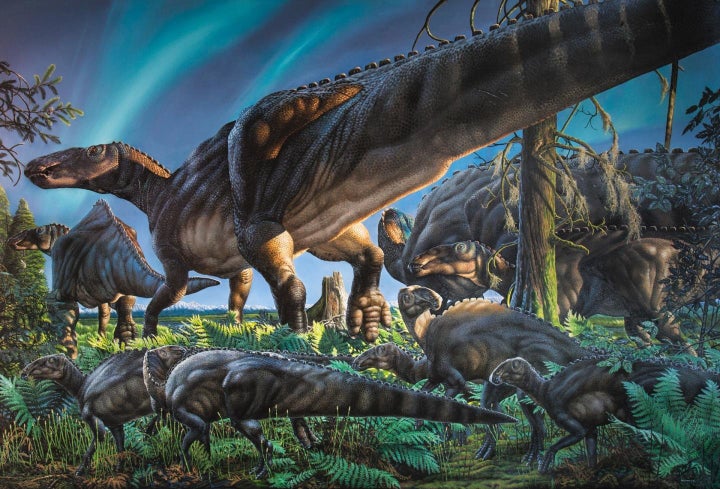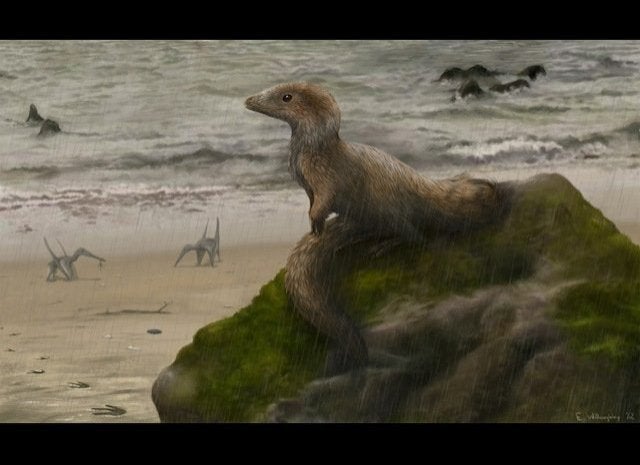
Researchers have discovered a new dinosaur with the resilience to live in darkness for months at a time and endure the unforgiving high Arctic of Alaska.
Ugrunaaluk (oo-GREW-na-luck) kuukpikensis (KOOK-pik-en-sis) was a duck-billed herbivore that grew to a length of up to 30 feet and chewed with hundreds of individual teeth made for eating coarse vegetation, researchers with the University of Alaska Museum of the North revealed Tuesday.
The dino is from a distinct species of hadrosaur, one that lived 69 million years ago in temperatures far cooler than his hadrosaur cousins found in Canada and the lower 48 states.
According to a university press release:
Earth sciences curator Pat Druckenmiller said the majority of the bones used in the study came from the Liscomb Bone Bed, a fossil-rich layer along the Colville River in the Prince Creek Formation, a unit of rock deposited on the Arctic flood plain about 69 million years ago.
"Today we find these animals in polar latitudes," Druckenmiller said. "Amazingly, they lived even farther north during the Cretaceous Period. These were the northern-most dinosaurs to have lived during the Age of Dinosaurs. They were truly polar."
It's the fourth known species unique to northern Alaska. Its bones were actually discovered decades ago, but were misclassified.
Most of the fossils were found in the Liscomb Bone Bed, more than 300 miles northwest of Fairbanks and a little more than 100 miles south of the Arctic Ocean. The bed is named for geologist Robert Liscomb, who found the first dinosaur bones in Alaska in 1961 while mapping for Shell Oil Co.

Liscomb thought the bones came from mammals. They remained in storage for about two decades, until someone identified the fossils as dinosaur bones, said Druckenmiller.
Researchers over the next 25 years excavated and catalogued more than 6,000 hadrosaur bones, far more than for any other Alaska dinosaur. Most were from juveniles estimated to have been about 9 feet long and 3 feet tall at the hips.
The remains initially were thought to be edmontosaurus, a hadrosaur well known in Canada and the U.S., including Montana and South Dakota. The formal study of the Alaska dinosaur, however, revealed differences in skull and mouth features that made it a different species, Druckenmiller said.
The findings were published Tuesday in Acta Palaeontologica Polonica, an international paleontology journal.
Ugrunaaluk kuukpikensis translates to "ancient grazer" and was chosen by scientists with assistance from speakers of Inupiaq, the language of Alaska Inupiat Eskimos.
The next step in solving the mystery of the new dinosaur is to study how it survived. Researchers say temperatures weren't as cold in the Alaskan Arctic back then, with a mean annual temperature in the 40s, but dinosaurs still had to endure long, dark winters with snow and little food.
The Associated Press contributed to this report.

